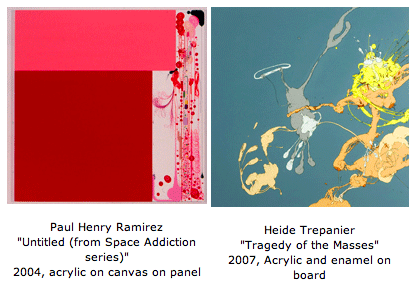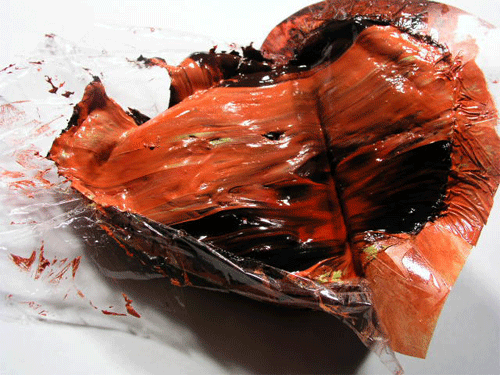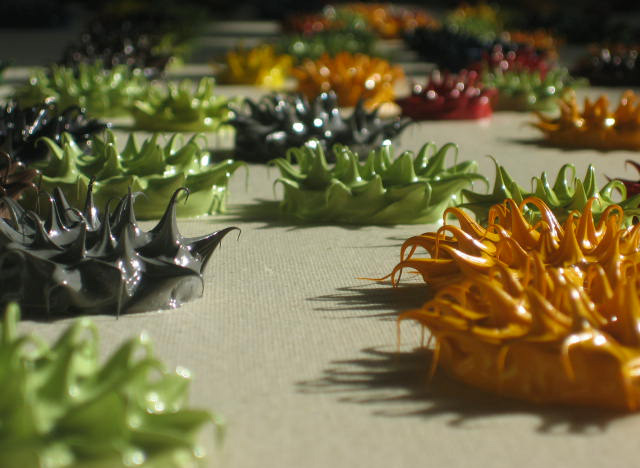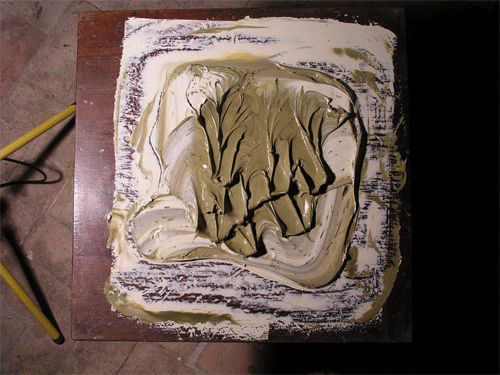November 3, 2007
Quirky

Professor Micha?l Amy curated *me into a show called Quirky:
QuirkyIt just so happens that I will be in NYC next week, and I just might be able to jump on the train to make it to the opening this coming Friday night.
November 9? December 19, 2007
Curated by Micha?l Amy
Opening: Friday, November 9, 6:30 to 8:30 pm
Curator?s Talk: Thursday, November 29, 7:00 pm
Morning Art Talk: Quirky in Context with Tom O?Connor: Thursday, December 6, 9:30-11 am
Quirky, an exhibition of contemporary painting and sculpture curated by Micha?l Amy, opens at the Westport Arts Center on Friday, November 9, with an opening reception from 6:30 ? 8:30 in the gallery at 51 Riverside Avenue. The show features work by Dennis Hollingsworth, Shirley Kaneda, Jonathan Lasker, John Newman, Paul Henry Ramirez, Heide Trepanier, and Sofi Zezmer.
?We were intrigued and then captivated by Micha?l Amy?s concept for this show,? said Eileen Wiseman, executive director of the Westport Arts Center. ?Quirky appeals to a wide range of gallery visitors?scholars, artists, school children, casual visitors. The show has an inherent sense of purpose, and also a sense of humor.?Quirky explores idiosyncrasy, the seemingly accidental twists of color, composition and texture that are found in contemporary abstract painting and sculpture. The works in Quirky playfully mock formalist principals of painting, and crosses the boundaries of decorum and ?good taste? through use of vibrant colors and unexpected forms. These lively, eccentric works challenge the status quo, defy categories, and rebel against a culture of conformity.
According to curator Micha?l Amy, ?Quirkiness has rich antecedents in the history of art. From the eccentricities of Bosch and Bruegel, through the invented biomorphs of Miro and the gentle humor of Klee, to the inimitable drips of Pollock, the idiosyncratic has always held great appeal.?
Tom O?Connor, co-chair of the Westport Arts Center?s visual arts committee, said, ?Quirky is a visually engaging and buoyant exhibition that celebrates the idiosyncratic in the face of an increasingly homogenized culture. While each of the artists brings his or her own very particular artistic personality to bear, they all share an acute visual intelligence that reflects a profound engagement with the issues in contemporary art.?Micha?l Amy is a critic, art historian, curator and lecturer, and an associate professor of art History in the College of Imaging Arts & Sciences at Rochester Institute of Technology. He received his doctorate and master of arts from New York University?s Institute of Fine Arts, and his BA from the Vrije Universiteit Brussel in Belgium. He has written for The New York Times, The New York Sun, Art & Antiques, Burlington Magazine, Viator, Apollo, the Mitteilungen des Kunsthistorischen Institutes in Florenz, DITS and CAA.Reviews. His book One to One: Conversation avec Tony Oursler (Brussels, Facteur Humain) appeared in 2006. He is a frequent contributor to Art in America, Sculpture and tema celeste. Amy lives and works in New York City and Rochester.
Here's what comes to mind when I consider the idea of quirk in painting:

When I touch tool to canvas, there are times when the paint looks better on the tool than on the canvas surface. It's a bit comedic, a happy circumstance. Sometimes, I'll scoop a mass of paint off the paper palette and notice something marvelous left behind.

The spiny blobs that I call monads came into being on the day I lifted a palette knife from a blob of paint. The cowlick that spring from my withdrawn tool was wonderful, and I did it again and again. I eventually spun the licks round hemispheres of paint to render a potentially endless array finite as the licked hemisphere closed in on itself.

Art is as simple and as difficult as paying attention.
Here's something I wrote about the subject last spring, working on a set of monotypes at Cirrus:
Jean's point man on this project is Francesco X. Sigueiros, a grandnephew of the great Mexican painter. He owns his own press called El Nopal and he also teaches at three schools locally. Francesco sports a laconic demeanor, he likes to joke in Spanish with his assistant Lino. Since I'm a perpetual student of Spanish/Castellano, I asked them not to translate unless I ask for it. Immediately, Francesco taught me what would be a recurring word: "ojete" (phonetically spelled), which means something like a mistake or a goof up. "Where did that come from?" I asked, looking for the entymological root. "O.J. Simpson", as in don't pull a boner like O.J. did. To orient them to what I might be looking for in the monotypes, I talked about how one can be working away on a painting, perhaps frustrated, and then a glance at the pallette or pallette knife reveals the most marvelous manifestations of paint. I said that the objective is to be alert for kismet that occurs at the edge of the "radar screen" and find a way to get that marvelousness onto the canvas or paper, in this case. That means we started with some experimentation, goofing around in "ojete" territory.
...We woud be in an experimentalist mode, a little bit of a goofy mood, ojete territory for sure. With each pull, we would study the result, forensic notes for the next attempt. Accident and deliberate intention following one after the other in rapid succession... ...Momentum rolled as we kept catching glimpses of beautiful kismet all about -on the drum, off the taped boundaries of the steel bed, even on the back of the paper as the medium soaked through. I kept asking: "How can we get this onto the paper?" So we kept inventing other forms of printing -blotting paper directly off the bed by hand, blotting off other wet sheets, printing off the rollers as we spritzed it with mineral spirits and water.Posted by Dennis at November 3, 2007 4:08 PM
Leave a comment